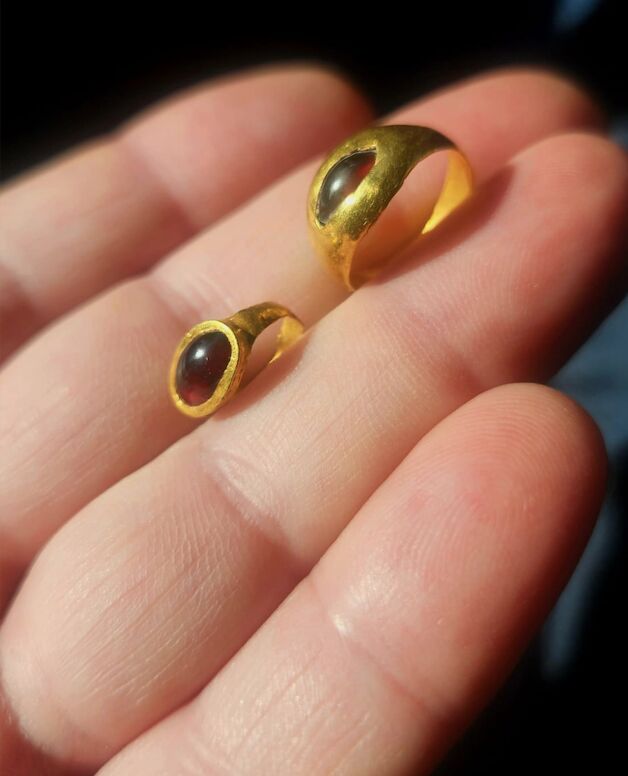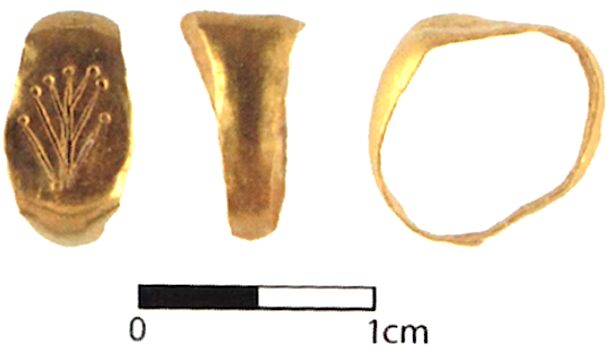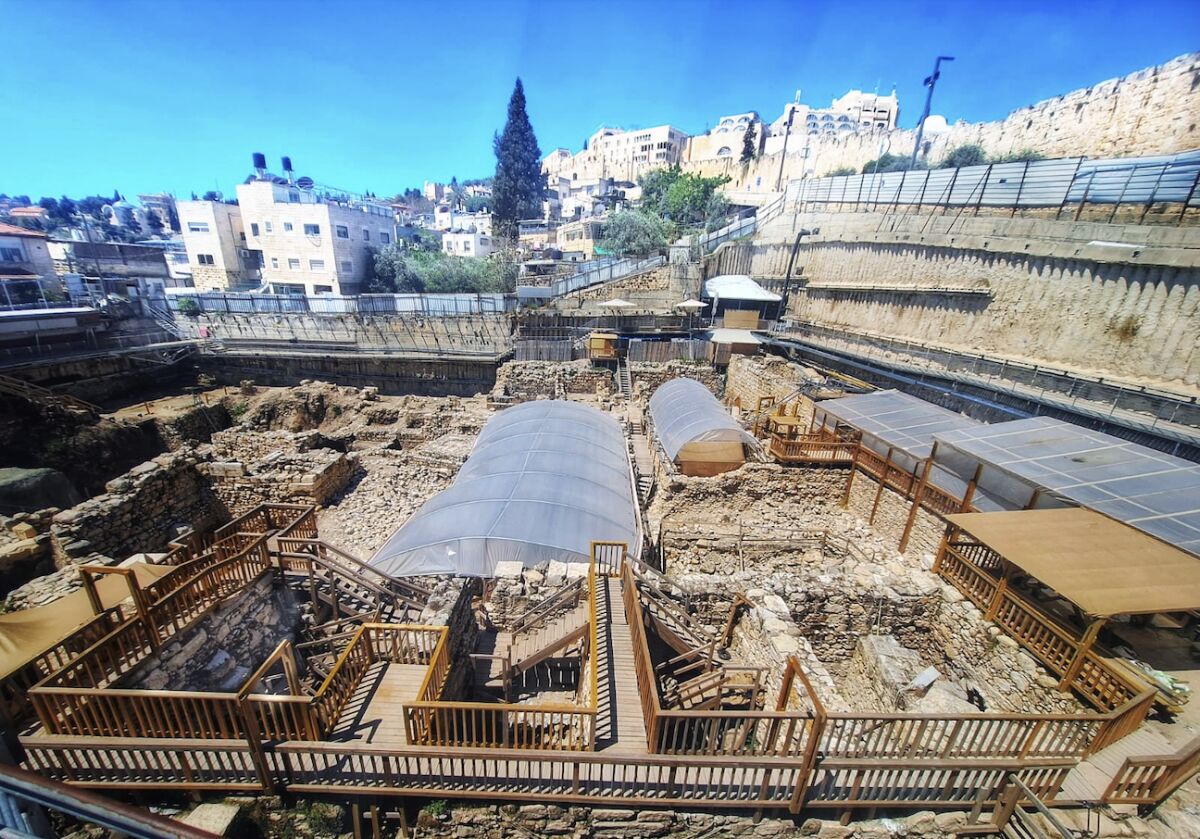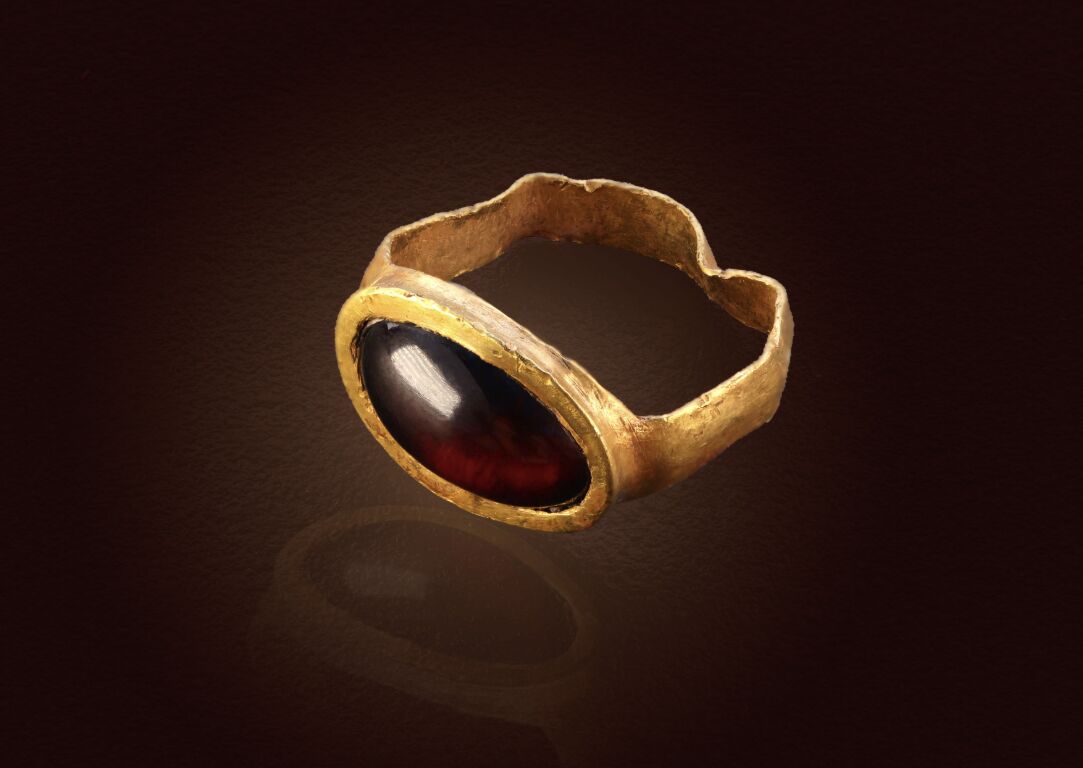For the second time in less than a year, a small gold ring set with a red gemstone—most likely garnet—has been unearthed in the City of David Givati Parking Lot excavations, conducted by the Israel Antiquities Authority and Tel Aviv University. The miniature ring is approximately 2,300 years old, dating to the early Hellenistic Period. Its small size indicates it belonged to a child. It parallels another miniature gold ring with a red gemstone that was revealed late last May. Other jewelry pieces were found in the same layer.

“That the two small rings and the rest of the jewelry were all discovered under the building’s floors raises the possibility that they were buried there on purpose,” Dr. Marion Zindel, one of the excavation managers, said. “One of the possibilities now being examined is that the jewelry found in the building’s foundations was in the context of executing of a well-known Hellenistic Period custom in which betrothed women would bury jewelry and other childhood objects in the house foundations as a symbol of the transition from childhood to adulthood.”
According to a statement issued by excavation managers Dr. Yiftah Shalev, Marion Zindel, Efrat Bocher and Prof. Yuval Gadot: “The two gold rings were discovered in a layer dating to the late third century or early second century b.c.e., set in the foundations of a large building which bears witness to its occupants’ wealth. In the same stratum in which these rings were unearthed, a number of bronze earrings were also recently found. And it is in this very same stratum that a gold earring decorated with a horned animal image and a decorated gold bead were also discovered—all dating from the early Hellenistic Period.”
According to Efrat Bocher, “This is the first time that we have found in Jerusalem such a large assemblage of gold jewelry from that period. This displayed wealth is very rare in any archaeological layer, and it attests to the wealth of Jerusalem and the high standard of living of the city’s residents during this period.”

This find also comes a few short years after another gold child’s ring was revealed to the public, this one around 2,000 years old, discovered adjacent to the Temple Mount. Originally found in the 1970s by Prof. Benjamin Mazar but only finally published by the late Dr. Eilat Mazar in 2021 (just prior to her untimely death), this particular ring was engraved with a menorah design and was so small that, in the words of Dr. Mazar, it “could fit only the finger of a newborn.” Read more about that discovery here.
According to Eli Eskosido, Israel Antiquities Authority director, “The discovery of the golden rings from the time of the Second Temple in the City of David is tangible evidence of the wealth, beauty and importance of Jerusalem even thousands of years ago. The Israel Antiquities Authority is proud to lead the archaeological research of Jerusalem, and to make accessible to the public the heritage of ‘Jerusalem of Gold’—not just as words in a song, but as historical facts uncovered right under our feet.”


